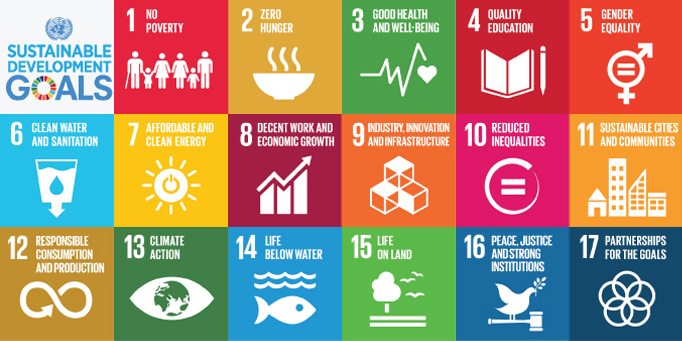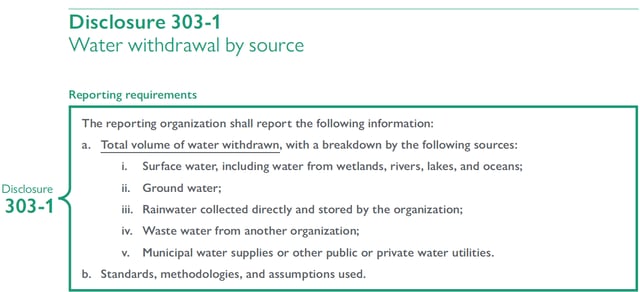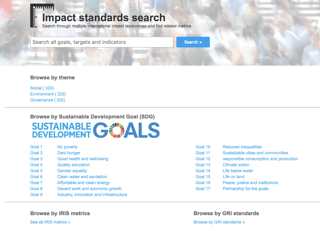
On 1 January 2016 the United Nations launched the Sustainable Development Goals (SDGs): 17 goals aimed at tackling today’s largest issues threatening people and planet. Achieving them is a shared responsibility: currently an increasing number of businesses is recognizing the role business can play in contributing towards achieving the SDGs. What’s problematic, is that there currently is no consistent way of measuring to what extent these businesses actually make a difference in these attempts: there is a gap between indicators most business use to track their social and environmental performance, and national level indicators used to track achievement of the SDGs. We at Sinzer are trying to bridge this gap by linking and connecting product- and service level targets and indicators with national level ones.
This blog post outlines how this linking can help organizations align with the Sustainable Development Goals (SDGs) through their social and environmental impact management.
Sustainable Development Goals
The SDGs have been introduced by the United Nations in September 2015 as part of the ‘2030 Agenda for Sustainable Development’, a successor to the Millennium Development goals, which ended in 2015. The SDGs consist of 17 goals, linked to 169 targets, which are in turn linked to 304 indicators.
The goals are ambitious in their aim to create a safer, more sustainable world, by setting goals such as ending poverty, supporting sustainable development and ensuring quality education and gender equality by 2030.
Currently, an increasing number of organizations recognizes the role they can play in improving the economy and social standards of a country. We feel understanding how the actions of these Organizations contribute towards achieving the SDGs is crucial both in maximizing these efforts, as well as creating wider recognition and support for the importance of the goals. This is why we aim to offer organizations a way to understand and use the sustainable development goals as they apply to their context.

SDG target 1.1 with corresponding indicator
The importance of Sustainable Development Goals for businesses
Many companies have their own way of attempting to align with the SDGs, the next paragraph describes how Unilever, Coca Cola and Microsoft try to do this and which difficulties it brings.
Unilever’s CEO Paul Polman recently stated: “There is no business case for enduring poverty. We have an opportunity to unlock trillions of dollars through new markets, investments and innovation. But to do so, we must challenge our current practices and address poverty, inequality and environmental challenges. Every business will benefit from operating in a more equitable, resilient world if we achieve the Sustainable Development Goals.” Polman understands that by aligning with the SDGs not only the environment and society at large will benefit, but businesses will benefit as well.
In order to align with the SDGs, Polman has set up the Unilever Sustainable Living Plan. This plan consists of three ‘big goals’: ‘Improving Health & Well-being’, ‘Reducing Environmental Impact’ and ‘Enhancing Livelihoods’. The plan contains actions Unilever commits to, as well as proposes metrics for measuring progress towards achieving them.
Analyzing the Unilever Sustainable Living Plan[1] we can see the correlation between this plan and the SDGs.
- Improving health & well-being links to SDG 3 ‘Good health and well-being’.
- Reducing Environmental Impact’ links to SDG 13 ‘Climate action’, SDG 6 ‘Clean water and sanitation’ and SDG 12 ‘Responsible consumption and production’.
- Enhancing Livelihood links to SDG 10 ‘Reduced inequalities’.
The indicators used by Unilever to monitor their Sustainable living plan are structured to measure progress at company product- and service level. As mentioned in the introduction of this blogpost however, the current SDG indicators are structured to measure National-level progress.
Similar to Unilever, Coca Cola has recognized the importance of the SDGs and has started to measure non financial metrics aligned with the SDGs[2]. Instead of using existing measures and metrics, Coca Cola has defined their own product- and service level indicators based on the 17 SDG goals. For example, as indicator for SDG goal 1 ‘No poverty’ Coca Cola uses: ‘Together with our bottling partners, providing jobs to over 700 thousand people globally.’ However, similar to Unilever, the way Coca Cola measures their non financial metrics does not sufficiently demonstrate to what extent their actions relate to achieving the SDGs. The same can be said about Microsoft, who - in their SDG alignment - has chosen to focus on the contributions their technology and philanthropy make towards reaching the SDGs, resulting in a focus on eight SDG goals[3]. Microsoft mapped their philanthropic projects to these SDG goals, but again is using bespoke organization-level indicators to do so. As with Unilever and Coca Cola, this results in a lack of insight into the extent to which this is or is not contributing to achieving the SDGs.
These examples demonstrate that although the SDGs provide an overarching framework for companies to report on their positive contribution to society, the way these companies are currently measuring and reporting their progress or ‘impact’ is suboptimal, if the goal is to determine to what extent these organisations are working towards achieving the SDGs.
Hence, a gap remains between product- and service level indicators companies use to track performance, and SDG national-level indicators. Furthermore, some companies are defining their own indicators in trying to align with SDG goals. However, several datasets exist that do contain standardised product- and service level indicators, such as IRIS and GRI, which companies can use to track their social and environmental performance and impact.

The Unilever Sustainable Living Plan, aligned with the Sustainable Development Goals
IRIS
The IRIS catalog (database), developed in 2008 by the Rockefeller foundation, Acumen and B Lab and currently managed by the Global Impact Investing Network (GIIN), contains a large set of metrics (indicators) that are designed to measure the social, environmental and financial performance of investments and companies. The IRIS catalog is divided in sectors of focus - Agriculture, Education, Energy, Environment, Financial services, Health, Housing/Community and Land conservation - that are each linked to a specific set of metrics. These metrics are in turn divided in financial performance metrics, operational metrics, product performance metrics, sector performance metrics and social and environmental metrics.

IRIS metric Ol9891: Pesticide use
GRI
The Global Reporting Initiative (GRI) has been founded in 1997 and operates as an international independent organization that helps governments and organizations understand and communicate the impact of business on critical sustainability issues, by providing standards and disclosures on sustainability reporting. The aim of GRI is to help organizations prepare sustainability reports and to make robust and sustainability reporting standard practice. GRI consists of sectors such as anti-corruption, water and employment.

GRI disclosure 301-1: Water withdrawal by source
Mapping SDGs with IRIS and GRI indicators
In spite of some companies developing their own indicators, both IRIS and GRI are well known and much used by companies that report on social and environmental performance, and allow for capturing both positive and negative impacts.
These datasets thus offer a logical starting point in attempting to link product- and service level indicators (IRIS and GRI) to national-level SDGs indicators and can help embed tracking towards the latter in companies’ day-to-day social and environmental performance management. Linking product, services and organisational (IRIS and GRI) metrics to national indicators (SDGs) will offer a framework with which companies can gain insight into how and how much their products and services are contributing towards achieving the SDGs.
What have we done to this effect? Sinzer has started to develop a database that:
- Contains all SDG, IRIS and GRI indicators, metrics and targets
- Provides suggestions on links between these three datasets, meaning we are linking product-service level metrics to national indicators (SDGs).
The aim is to deliver a database and tool that organizations can browse through to find organisation-, product-, and service-level indicators and immediately see to which SDG these relate. In the future we aim to integrate this into our Sinzer software platform as well, which organizations can use to track and manage their social and environmental performance and impact. The tool and its database will be available to Sinzer clients that want to report on their social impact aligned with the SDGs.
Interested in learning more about the SDGs, IRIS and GRI? Download the case study Template for Impact investors
Visit the Impact Standards Search and explore the linkages yourself!
[1] https://www.unilever.com/sustainable-living/the-sustainable-living-plan/
[2] http://www.coca-colacompany.com/stories/sustainable-development-goals
[3] https://www.microsoft.com/en-us/about/corporate-responsibility/un-sdgs
-1.jpg?width=232&name=GT%20Sinzer_logo_screen_descriptor%20(1)-1.jpg)


